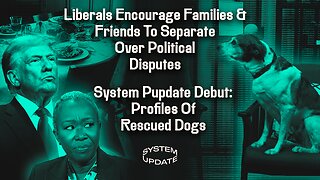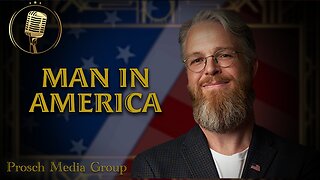Premium Only Content
![Sept 11 2001 [ENGINEERING WITH NUCLEAR EXPLOSIVES] aka World Trade Center Ground ZERO](https://1a-1791.com/video/s8/1/k/_/5/F/k_5Fl.qR4e.4-small-Sept-11-2001-ENGINEERING-WI.jpg)
Sept 11 2001 [ENGINEERING WITH NUCLEAR EXPLOSIVES] aka World Trade Center Ground ZERO
Information Terrorism PNAC Plans for a New American Century Atoms for PEACE : Dustification ENGINEERING WITH NUCLEAR EXPLOSIVES Sept 11 2001 [Peaceful Nuclear Explosions] aka World Trade Center Twin Towers Ground ZERO Underground Nuclear Detonation MIT scientist 911 Cancer NYC Fire Dept Cancer rate. Nuclear War NATO Expansion WTC Building 7 BBC knew FVEYS UK AUS Canada.
Testing of peaceful nuclear explosions (PNE) by both the USA and USSR.From the outset it was realized that thermonuclear blasts (as distinct from fission) would have the least potential for radioactive fallout. However, along with early weapons tests, some PNE tests did contribute to atmospheric radioactivity, and some test sites now pose a radiological hazard.Applications of PNEsPossible applications for peaceful nuclear explosions include:
Large-scale excavation to create reservoirs, canals and ports.
Stimulating oil and gas recovery.
Creating cavities for underground oil, gas or waste storage.
Extinguishing gas field fires.
Space propulsion.
Interception of potentially dangerous Near Earth Objects (asteroids, etc).
Recovering oil from oil shale.
Energy production via molten fluorides underground producing steam for electricity.
Breaking up copper and phosphate ore preparatory to mining.
Of these, the first four have been tested (and even applied in some cases by the USSR) while the remaining five have been investigated but not tested.A total of 151 PNE experiments have been carried out by both the USA (27) and the USSR (124 plus 32 tests that helped develop explosive devices used in PNEs). No other country has ever carried out a PNE testa and there are currently no moves towards a resumption of tests.Some advocates claim that PNEs would be the most economically feasible method of carrying out large terrestrial engineering projects, and that they provide one of only a few feasible means of managing large gas field fires and destroying chemical weapons. However, a significant concern is that the widespread commercial introduction of PNEs would represent a security risk – increasing the number of nuclear explosives and their locations, along with civilian accessibility.PNE programs resulted in some international collaboration. Following an approach from the Soviet Union to the USA, the first of four bilateral discussions on PNEs was held in Vienna in April 1969. Subsequent meetings were held in Moscow (1970), Washington (1971), and Vienna (1975). In the course of these meetings with scientists from the US Plowshare Program (see next section), Soviet scientists unveiled some of the technical details of their first few PNE experiments as well as general plans for several applications they were developing. In the early 1970s, the Soviet Union also provided information on the scope and technical results of some of their activities through a series of meetings on PNEs at the International Atomic Energy Agency (IAEA) in Vienna.PNEs will be banned under the Comprehensive Nuclear Test-Ban Treaty (CTBT) when it eventually enters into force (see section below on Treaties governing the use of PNEs).USA: Plowshare ProgramThe Plowshare Programb was the name given to the main US efforts to promote and develop nuclear explosions for peaceful purposes during the 1960s and 1970s, concluding in 1975.Project Plowshare was formally established in mid-1957 by the former US Atomic Energy Commission (AEC). Later in the year, the AEC carried out the first underground nuclear explosion at the Nevada Test Site – the Rainier event, of 1.7 kilotonc. Results from this validated theoretical concepts and gave impetus to Plowshare. In total, 27 PNE tests consisting of 35 separate blasts were conducted between December 1961 and May 1973 in the USA as part of the program.Most of the Plowshare proposals were for large-scale civil engineering projects involving massive earthmoving, specifically to improve the shipping lanes linking the Atlantic and the Pacific. At least one was intended to widen the Panama canal, another aimed to create a new sea-level waterway through Nicaragua. Two other geo-engineering proposals were for a harbour and a highway and rail cutting. Other Plowshare proposals and tests sought in various ways to exploit other applications listed above, particularly gas and oil recovery.From a scientific and engineering perspective the program was by most accounts successful; however, economic viability was questionable and no commercial operation involving PNEs has resulted in the USA or been carried out by a US organization. Over time, scientists learned how to shape charges to provide the desired engineering result and also almost completely to eliminate the release of radioactive materials. However, not all explosions proceeded as planned and in certain cases, notably the Sedan blast (see below), significant radioactive releases occurred.An early proposal was Operation Chariot, accepted by the AEC in 1958, to build a harbour at Point Hope, Alaska to facilitate the transport of coal and oil. The harbour was to be about a 1.5 km long and 0.8 km wide. One scheme for its development involved the use of five chained thermonuclear explosions. The plan was permanently shelved in 1962 due to local opposition from the Inupiat Eskimos and conservationists concerned about the health of the local ecosystem which the Inupiat relied upon for food. The economic viability was also questioned.In 1959 the Oilsands study looked at using a PNE for extracting oil from Canada's Athabasca tar sands, and the Olishale study looked at shattering oil shales to enhance oil recovery from them, this being taken further in the 1967 Bronco study focused in Colorado. A 1971 study looked a using a PNE to harness geothermal energy.In 1963, the Caryall study on the use of PNEs to excavate a cutting through the Bristol Mountains near Amboy was carried out by the California State division of Highways and Santa Fe Railway. The 3.4 km cut was designed to accommodate both the Interstate 40 highway and a new rail line. About 22 nuclear explosions would have been required, ranging in size from 20 to 200 kilotons, providing a total explosive force of 1730 kilotons. The plan was cut from the US budget in 1965.After Chariot, almost all excavation research to 1970 was then focused on building a sea-level canal across the Central American isthmus in support of the Atlantic-Pacific Interoceanic Canal Study Commission to replace the Panama canal. As part of this project, six cratering experiments were carried out at the Nevada Test Site over 1961-68, including Sedan described below. Part of the purpose was to establish means to reduce radioactive contamination from such blasts.PNE tests in the USAThe first full test of the Plowshare Program was Project Gnome, which took place in December 1961, near Carlsbad, New Mexico, in a bedded salt formation. International observers were in attendance. The device was placed in a tunnel 360 metres underground and the resulting 3.1 kiloton blast created a cavity 20 metres wide and 50 metres high. The explosion was supposed to be self-sealing, but a brief burst of radioactive material was released. Some six months after the test, a new access tunnel was drilled and crews entered to survey the results. They found a blue, green and violet landscape of melted salt stalactites, and the temperature of the cavity was still above 60°C.The second PNE test under project Plowshare was also one of the largest. The Sedan blast took place at Yucca Flat on the Nevada Test Site in July 1962. It was a shallow underground explosion designed to test the cratering potential of PNEs for the creation of artificial lakes and reservoirs. A thermonuclear device was inserted 194 metres into the desert alluvium. The resulting 104 kiloton explosion created a dome 90 metres high which then exploded outwards displacing more than 10 million tonnes of material to create a crater 100 metres deep and 390 metres wide. Of all Plowshare nuclear tests, Sedan created the most radioactive fallout. Twin dust plumes deposited radioactive material downwind, with the highest concentrations in Iowa and South Dakota of more than 0.22 gigabecquerels per square metre.Three separate PNE tests were carried out to assess the ability of nuclear explosions to stimulate gas production from low-permeability formations. These were Gasbuggy (December 1967, New Mexico: 29 kilotons), Rusilon (September 1969, Colorado: 43 kilotons) and Rio Blanco (May 1973, Colorado: 3 blasts of 33 kilotons each at depths of 1600-2100 metres using charges 195 mm diameter). Rio Blanco also marked the end of the US PNE test program. It was already known that conventional explosions could stimulate production of gas, and the use of nuclear explosives just added to the overall force of the explosion. While the level of gas production from the tests was less than expected, it would have been sufficient to make the process commercially viable if the resulting gas had not been considered too radiologically contaminated by tritium for saled.Starting with the Gnome test in 1961, Plowshare provided support for scientific experiments, primarily as additions to weapons tests, to look at the possibility of using these high neutron fluxes to produce heavy transplutonic elements well beyond the end of the Periodic Table. The ultimate goal was the use of multiple neutron captures to reach the predicted 'island of stability' at element 114. Between 1962 and 1969, Plowshare supported the design and fielding of five dedicated experiments and 'add-ons' to some 10 weapons tests at the Nevada Test Site in an attempt to reach this elusive goal. Certainly large quantities of some heavy elements were produced, and traces were recovered from the melt zone, e.g. the actinides curium-250 and fermium-257.USA: Other proposals for the use of PNEsNot all US concepts for the use of PNEs officially came under the banner of the Plowshare Program. A few other proposals, developed by various organizations, include the potential use of PNEs for space travel and energy production.PNEs for space travelProject Orion was the first serious attempt to develop the concept of Nuclear Pulse Propulsion, i.e. using nuclear explosions for spacecraft thrust. It was initiated by the company General Atomics in 1958 and continued until 1965, though impetus for the idea was largely killed off by the signing of the Partial Test Ban Treatye in 1963, which banned nuclear testing in space due to fears over the effects of fallout. The basic concept was to detonate shaped nuclear charges in space behind a spacecraft mounted with a pusher plate and a shock absorber so as to transfer momentum. The principle was shown to be robust, leading to both excellent thrust and impulse characteristics, something quite rare for space propulsion techniques which usually trade one off against the other. It was also well suited for large spacecraft (about 1000 t) since significant mass was required to shield against the effects of radiation.Electricity from PNEsOne possibility of harnessing nuclear fusion as an energy source was the suggestion of detonating small thermonuclear weapons in an underground cavity and capturing the energy. The Pacer Project, developed at Los Alamos National Laboratories during the mid-1970s, investigated the design and operation of such a system. The original proposal involved the use of low-yield hydrogen bombs, while subsequent proposals advocated simpler fission devices. One variation of the plan called for nuclear devices in the kiloton range to be detonated in an underground cavity at regular intervals of about 45 minutes. The heat would be captured by molten fluoride salts flowing down the chamber wall which would then act as a heat exchange fluid producing steam to drive a turbine for electricity. The early plan envisaged the blast chamber as being inside a salt dome, but later developments called for a fully-engineered vessel. The concept never developed past the planning stage.
Symposium On
ENGINEERING WITH NUCLEAR EXPLOSIVES
https://inis.iaea.org/collection/NCLCollectionStore/_Public/36/010/36010774.pdf
Note: This VIDEO I created/edited some 15yrs ago has been Removed Banned by Youtube 21 Times.
-
 5:00:01
5:00:01
Pepkilla
16 hours agoDouble XP Zombies and Warzone ~
66.6K10 -
 0:46
0:46
Dr Disrespect
2 days agoIt's not just a stream... it's an experience
577K2.93K -
 1:28:27
1:28:27
Kim Iversen
1 day agoBOMBSHELL: Secret British Military Plot to Prolong the Ukraine War And Take Down The Grayzone
149K281 -
 11:54
11:54
Professor Nez
15 hours ago🚨CHILLING REVELATION: Tucker Carlson Reveals Dems NEXT PLAN to STOP Trump!
163K61 -
 6:51
6:51
Colion Noir
15 hours agoI have Something To Say To Gun Owners
103K27 -
 1:18:24
1:18:24
Glenn Greenwald
19 hours agoLiberals Encourage Family & Friends To Separate Over Political Disputes; Segment Debut Of System Pupdate: Profiles Of Rescued Dogs | SYSTEM UPDATE #373
158K398 -
 1:24:53
1:24:53
Flyover Conservatives
1 day agoMarketing Madness or Manipulation? The War on Western Identity - Alex Newman; Economic Update - Dr. Kirk Elliott | FOC Show
77.2K8 -
 1:15:05
1:15:05
PMG
1 day ago $14.23 earned"Big Pharma EXPOSED: The HIDDEN Cures They Tried to Bury"
63.7K19 -
 3:26:12
3:26:12
Tundra Gaming Live
16 hours ago $3.95 earnedThe Worlds Okayest War Thunder Stream
51.2K1 -
 1:49:52
1:49:52
VOPUSARADIO
23 hours agoPOLITI-SHOCK! Back To Back Guests: Rebekah Koffler & Dr. Michael Schwartz
37.9K1